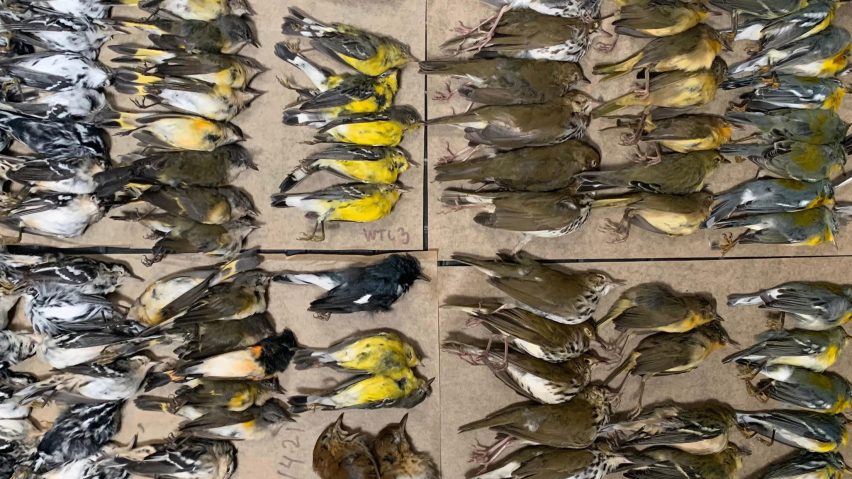Architects could "easily" prevent billions of bird deaths a year caused by collisions with glazed and mirrored buildings, says Jared Goodman of animal rights organisation PETA in this exclusive interview.
People for the Ethical Treatment of Animals (PETA) believes that despite the huge number of avian deaths caused by buildings, both architects and the general public pay little attention to the issue.
"Collisions with buildings – particularly their windows – are a leading source of bird mortality, killing up to a billion birds every year in the US alone," said PETA general counsel for animal law Goodman.
"These bird deaths are due more to negligence or simple indifference [as opposed] to the cruelty inherent in animal agriculture or the fur industry," he told Dezeen.
Buildings with large amounts of glazing or mirrored facades are understood to be responsible for huge numbers of bird deaths each year globally, with one billion killed in the US and an estimated 100 million bird collisions in the UK.
"Architects must take into account" a building's impact on birds
However, Goodman believes that the majority of these deaths can be prevented by architects amending their designs to protect birds.
He believes it is the architect's responsibility to consider their buildings' potential impact on bird populations.
"All architects must take into account and attempt to reduce the impact of their designs on the sentient beings around us," said Goodman.
"Architects can easily have films, ultraviolet patterns, and other innovative designs added to glass windows."
Architects taking action as "it's important to the public"
Although many may be unaware of the issue, Goodman believes that growing public interest is forcing architects to amend designs and switch plain glass for "bird-friendly glass".
"People are becoming increasingly aware of this issue, and as architects learn that it's important to the public, more and more buildings will be constructed with design elements that help keep birds safe," he said.
"We recommend replacing plain glass with acid-etched, fritted, or frosted glass; ultraviolet patterned glass; or channel glass to help protect birds," he continued.
"More and more structures now incorporate bird-friendly glass, demonstrating how awareness, planning and a commitment to the environment can prevent countless deaths."
Along with promoting greater public awareness and encouraging architects to consider bird populations in their designs, PETA is also pushing for building regulations to consider the impact on birds.
Legislation needed to protect birds
In 2019 the US House of Representatives passed a bill to reduce the amount of glass used for federal buildings in a bid to protect birds from death by collision, while earlier this year a bill was filed in Washington DC calling for the city's new buildings to use bird-friendly glass.
However, most development worldwide is not regulated to mitigate buildings' danger to birds, while many of the world's most high-profile architecture studios continue to create heavily glazed structures.
"PETA encourages everyone to take action for birds by contacting property owners and local government officials about any construction planned in their area," said Goodman.
"We are also calling on the public to push their legislators to pass laws that require bird-safe glass in new construction."
The impact that glazed buildings have on birds made headlines last year when Melissa Breyer from New York City wildlife charity NYC Audobon collected the corpses of 226 birds killed at the World Trade Center in a single day (top image).
In response, experts told Dezeen that more legislation was needed to force architects to save birds that "didn't evolve to deal with glass".
The main image is by Melissa Breyer.

